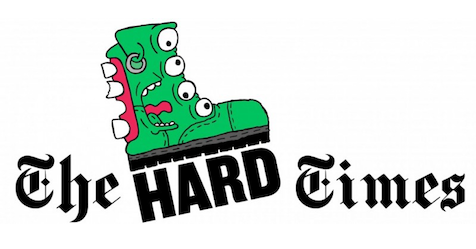Does your inner monologue sound like it has a bone caught in its throat? Do you dream of living in abject squallor or riding the rails? When you took a high school career aptitude test, was your top recommended job “Circus Freak?” If you answered yes to one or more of these questions, then you already know the pure joy and maddening bliss that is the discography of American singer-songwriter Tom Waits. Along with his wife/writing partner Kathleen Brennan, Waits has developed a sound that’s entirely his own, a cult figure’s cult figure.
Yes, it’s safe to say Tom Waits is our favorite weird little guy. But how do his albums line up? Where’s the best place to start? Well, read on, dear friends, and see for yourself.
17. Heartattack and Vine (1980)
 This album opens with a menacing self-titled track, filled with grit and ugliness. It’s not hard to see why it was covered by shock-rock legend Screamin’ Jay Hawkins. The tragedy is not that its opening song is such a perfect encapsulation of Hollywood seediness, it’s that the album’s remaining eight songs don’t manage to reach the height of its opener. It’s not a bad album, of course, but it lacks the sophistication of ‘70s Waits and the umph of later ‘80s/’90s outputs.
This album opens with a menacing self-titled track, filled with grit and ugliness. It’s not hard to see why it was covered by shock-rock legend Screamin’ Jay Hawkins. The tragedy is not that its opening song is such a perfect encapsulation of Hollywood seediness, it’s that the album’s remaining eight songs don’t manage to reach the height of its opener. It’s not a bad album, of course, but it lacks the sophistication of ‘70s Waits and the umph of later ‘80s/’90s outputs.
Play It Again: “Heartattack and Vine”
Skip It: “In Shades”
16. Bad As Me (2011)
 Waits’ most recent (and possibly final) LP, “Bad As Me” seems almost like a career retrospective. Songs like “Last Leaf” harken back to his origins in the spare folk and jazz sounds of the 70s, while reverb-heavy songs like “Talking at the Same Time” or percussive songs like “Get Lost” call to mind songs off of “Rain Dogs.” Ultimately, though, while this album isn’t bad by any means, it fails to quite capture the ambition or sincerity of many of his earlier efforts.
Waits’ most recent (and possibly final) LP, “Bad As Me” seems almost like a career retrospective. Songs like “Last Leaf” harken back to his origins in the spare folk and jazz sounds of the 70s, while reverb-heavy songs like “Talking at the Same Time” or percussive songs like “Get Lost” call to mind songs off of “Rain Dogs.” Ultimately, though, while this album isn’t bad by any means, it fails to quite capture the ambition or sincerity of many of his earlier efforts.
Play It Again: “Talking At the Same Time”
Skip It: “Raised Right Men”
15. Real Gone (2004)
 Sure you’ve heard beatboxing, but you’ve never heard Tom Waits beatboxing. Well, guess what, baby, now ya have! And it’s glorious! Now granted, this whole album is a little bit too long, and a little bit too abrasive, like “Bone Machine” or “Black Rider” taken to villainous excess. But ultimately, songs like “Top of the Hill,” “Don’t Go Into That Barn” and “Dead and Lovely” are still there to make it a worthwhile listen and lines like “Night is falling like a bloody axe” remind us why we love Waits’ songwriting.
Sure you’ve heard beatboxing, but you’ve never heard Tom Waits beatboxing. Well, guess what, baby, now ya have! And it’s glorious! Now granted, this whole album is a little bit too long, and a little bit too abrasive, like “Bone Machine” or “Black Rider” taken to villainous excess. But ultimately, songs like “Top of the Hill,” “Don’t Go Into That Barn” and “Dead and Lovely” are still there to make it a worthwhile listen and lines like “Night is falling like a bloody axe” remind us why we love Waits’ songwriting.
Play It Again: “Sins of My Father” (Yeah, it’s long. Listen anyway, you babies!)
Skip It: “Metropolitan Glide”
14. The Heart of Saturday Night (1974)
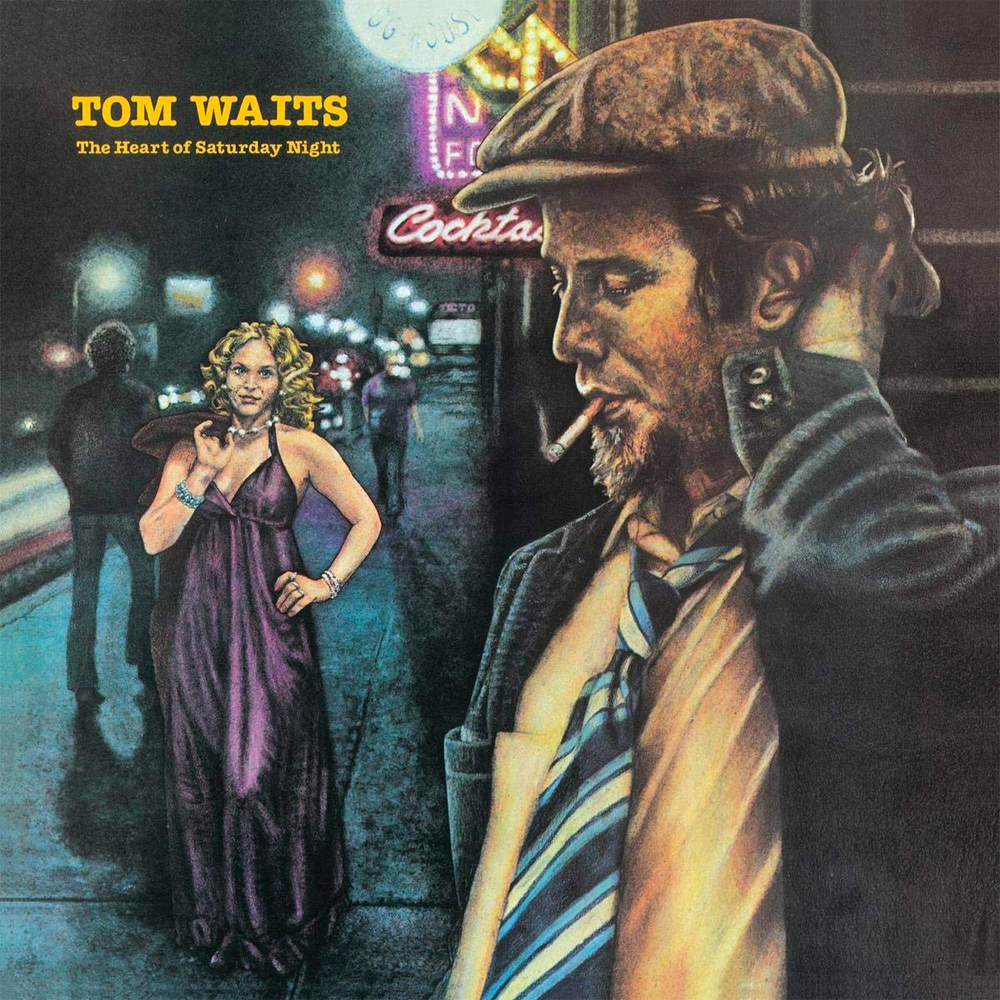 Tom Waits’ sophomore effort is, in many ways, a distillation of his first. A true jazz record, this album opens with “New Coat of Paint,” a seedy, dancy number, before offering an emotional gut punch with “San Diego Serenade.” It’s not as inventive as “Closing Time” was before it or as fun as “Nighthawks at the Diner” right after, but “The Heart of Saturday Night” offers an earnest and beautiful listening experience, an oddly lovely addition to the Waits canon.
Tom Waits’ sophomore effort is, in many ways, a distillation of his first. A true jazz record, this album opens with “New Coat of Paint,” a seedy, dancy number, before offering an emotional gut punch with “San Diego Serenade.” It’s not as inventive as “Closing Time” was before it or as fun as “Nighthawks at the Diner” right after, but “The Heart of Saturday Night” offers an earnest and beautiful listening experience, an oddly lovely addition to the Waits canon.
Play It Again: “New Coat of Paint”
Skip It: “Diamonds On My Windshield”
13. Foreign Affairs (1977)
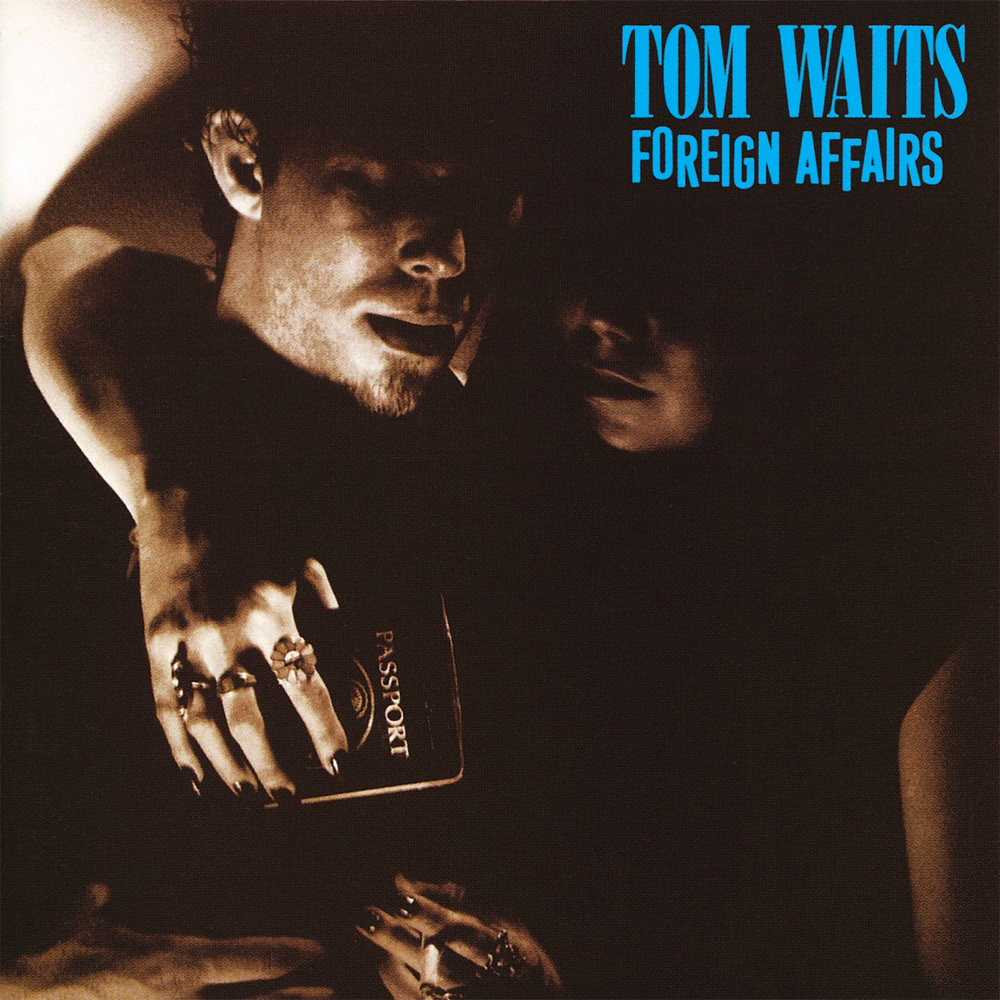 Often written off as Waits’ weakest work, “Foreign Affairs” is an album I will defend to my last, mostly because I firmly believe its messiness is a big part of its charm. The opener “Cinny’s Waltz,” sets the tone for an odd, if deeply relaxing experience, while “I Never Talk To Strangers,” features a rare duet with Waits and his then partner Bette Midler (you read that correctly). Ultimately, it’s not his strongest effort, but there’s never a moment to doubt that it’s vintage Waits, having some incredible fun.
Often written off as Waits’ weakest work, “Foreign Affairs” is an album I will defend to my last, mostly because I firmly believe its messiness is a big part of its charm. The opener “Cinny’s Waltz,” sets the tone for an odd, if deeply relaxing experience, while “I Never Talk To Strangers,” features a rare duet with Waits and his then partner Bette Midler (you read that correctly). Ultimately, it’s not his strongest effort, but there’s never a moment to doubt that it’s vintage Waits, having some incredible fun.
Play It Again: “A Sight For Sore Eyes”
Skip It: “Foreign Affair”
12. Nighthawks at the Diner (1975)
 Waits’ third album is one that’s designed to leave the listener with a sense of “something’s off about this dude, but I don’t know what.” In Nighthawks, Waits recreates the feel of a live recording in the studio, with long, often wryly comedic monologues prefacing each song, a studio audience and improvisation galore, this album feels like a perverse reincarnation of Sarah Vaughan’s “At Mr. Kelly’s,” with lines like “Hubba hubba, ding ding dong, baby it sure didn’t last too long” and “I’m so goddamn horny, the crack of dawn better be careful around me,” strewn in like little gems. Ultimately, though, it is a very long album and one that overstays its welcome quicker than one might like.
Waits’ third album is one that’s designed to leave the listener with a sense of “something’s off about this dude, but I don’t know what.” In Nighthawks, Waits recreates the feel of a live recording in the studio, with long, often wryly comedic monologues prefacing each song, a studio audience and improvisation galore, this album feels like a perverse reincarnation of Sarah Vaughan’s “At Mr. Kelly’s,” with lines like “Hubba hubba, ding ding dong, baby it sure didn’t last too long” and “I’m so goddamn horny, the crack of dawn better be careful around me,” strewn in like little gems. Ultimately, though, it is a very long album and one that overstays its welcome quicker than one might like.
Play It Again: “Emotional Weather Report”
Skip It: “Nobody”
11. The Black Rider (1993)
 Tom Waits… theater kid? Oh yeah, theater kid. “The Black Rider” is a unique artifact, probably more appreciated than enjoyed. The first collaboration with avant-garde director Robert Wilson, “The Black Rider” is a horror adaptation of a German folktale, and a not so coded “oopsie-poopsie, sorry I shot my own wife, it was the heroin, I swear” apology letter from William S. Burroughs. Ultimately, this album isn’t the easiest to get through, but the run of the first four songs is an absolutely flawless tour of insanity from Waits. So if you think you’d enjoy dark carnival music or simply want to hear Tom Waits sing in a militantly unplaceable European accent, then just come on along with “The Black Rider.”
Tom Waits… theater kid? Oh yeah, theater kid. “The Black Rider” is a unique artifact, probably more appreciated than enjoyed. The first collaboration with avant-garde director Robert Wilson, “The Black Rider” is a horror adaptation of a German folktale, and a not so coded “oopsie-poopsie, sorry I shot my own wife, it was the heroin, I swear” apology letter from William S. Burroughs. Ultimately, this album isn’t the easiest to get through, but the run of the first four songs is an absolutely flawless tour of insanity from Waits. So if you think you’d enjoy dark carnival music or simply want to hear Tom Waits sing in a militantly unplaceable European accent, then just come on along with “The Black Rider.”
Play It Again: “November”
Skip It: “‘T’Aint No Sin” (Listen, it’s fun to hear William S. Burroughs whimper this song, but he should’ve probably just stuck to writing terrible books.)
10. Small Change (1976)
 Of all the personas Waits has worn in his career, one of his favorites seems to be “drunk philosopher at the bar who smells like stew and looks potentially rabid.” “Small Change” is perhaps the best portrayal of this character. The opener, “Tom Traubert’s Blues” is a travelogue from Hell, while the infomercial-esque “Step Right Up” allows the bass to have an ecstatic religious vision and “The Piano Has Been Drinking (Not Me) (An Evening With Pete King)” features some of Waits’ best drunken ramblings.
Of all the personas Waits has worn in his career, one of his favorites seems to be “drunk philosopher at the bar who smells like stew and looks potentially rabid.” “Small Change” is perhaps the best portrayal of this character. The opener, “Tom Traubert’s Blues” is a travelogue from Hell, while the infomercial-esque “Step Right Up” allows the bass to have an ecstatic religious vision and “The Piano Has Been Drinking (Not Me) (An Evening With Pete King)” features some of Waits’ best drunken ramblings.
Play It Again: “Tom Traubert’s Blues (Four Sheets to the Wind in Copenhagen)”
Skip It: “The One That Got Away”
9. Blue Valentine (1978)
 This album marks a transitional period for Waits, a sort of, dare I say… Cosmic Gumbo of his ‘70s jazz and ‘80s avant-rock phase. Like Eugene V. Debs, most of these songs are of a criminal element, which makes it doubly odd to think that the opener is a cover of a song from “West Side Story.” But leave it to Waits to pull it off. Ultimately, though, the album isn’t quite as fun or pleasant as some of his other works and comes off as just slightly overrated in the longrun.
This album marks a transitional period for Waits, a sort of, dare I say… Cosmic Gumbo of his ‘70s jazz and ‘80s avant-rock phase. Like Eugene V. Debs, most of these songs are of a criminal element, which makes it doubly odd to think that the opener is a cover of a song from “West Side Story.” But leave it to Waits to pull it off. Ultimately, though, the album isn’t quite as fun or pleasant as some of his other works and comes off as just slightly overrated in the longrun.
Play It Again: “Christmas Card From a Hooker in Minneapolis”
Skip It: “$29.00”
8. Swordfishtrombones (1983)
 The first of his experimental 80s trilogy, “Swordfishtrombones” truly shows a new side of Waits, a more performative, character-based side than had previously been seen. In “16 Shells From a Thirty-Ought-Six,” he tells the story of a Faustian guitar bargain, while in “In the Neighborhood,” he plays the role of a deranged suburbanite ranting and raving about garbage trucks and butter. While it still feels a little uneven at times, this album is the perfect accompaniment for a dinner party with all the people you hate.
The first of his experimental 80s trilogy, “Swordfishtrombones” truly shows a new side of Waits, a more performative, character-based side than had previously been seen. In “16 Shells From a Thirty-Ought-Six,” he tells the story of a Faustian guitar bargain, while in “In the Neighborhood,” he plays the role of a deranged suburbanite ranting and raving about garbage trucks and butter. While it still feels a little uneven at times, this album is the perfect accompaniment for a dinner party with all the people you hate.
Play It Again: “In the Neighbourhood”
Skip It: “Trouble’s Braids”
7. Blood Money (2002)
 If “Mule Variations” is Waits’ Bergmanian struggle with God, this is his holy war against the devil. This album is yet another theatrical excursion by the Waits/Brennen songwriting team with Robert Wilson for the play “Woyzeck.” Released the same year as the jazzy and balletic “Alice,” this album counters it beautifully with crunchy and evil abrasiveness that begs the question: Should we really get our ten-year-old son that drum set?
If “Mule Variations” is Waits’ Bergmanian struggle with God, this is his holy war against the devil. This album is yet another theatrical excursion by the Waits/Brennen songwriting team with Robert Wilson for the play “Woyzeck.” Released the same year as the jazzy and balletic “Alice,” this album counters it beautifully with crunchy and evil abrasiveness that begs the question: Should we really get our ten-year-old son that drum set?
Play It Again: “All the World is Green”
Skip It: “Knife Chase”
6. Closing Time (1973)
 A debut for the ages, and a great intro for first time listeners, Waits’ first album features songs like “Grapefruit Moon,” “Martha” and his classic “Ol’ 55,” which served as his first breakout song and was (unfortunately) covered by the Eagles a short time later. Ultimately, while this is a pretty simple folk/country/jazz LP, odd songs like the uptempo (and strangely deeply sexual) “Ice Cream Man” are a welcome indication of the directions Waits would eventually turn towards.
A debut for the ages, and a great intro for first time listeners, Waits’ first album features songs like “Grapefruit Moon,” “Martha” and his classic “Ol’ 55,” which served as his first breakout song and was (unfortunately) covered by the Eagles a short time later. Ultimately, while this is a pretty simple folk/country/jazz LP, odd songs like the uptempo (and strangely deeply sexual) “Ice Cream Man” are a welcome indication of the directions Waits would eventually turn towards.
Play It Again: “Rosie”
Skip It: “Little Trip to Heaven (on the Wings of Your Love)”
5. Mule Variations (1999)
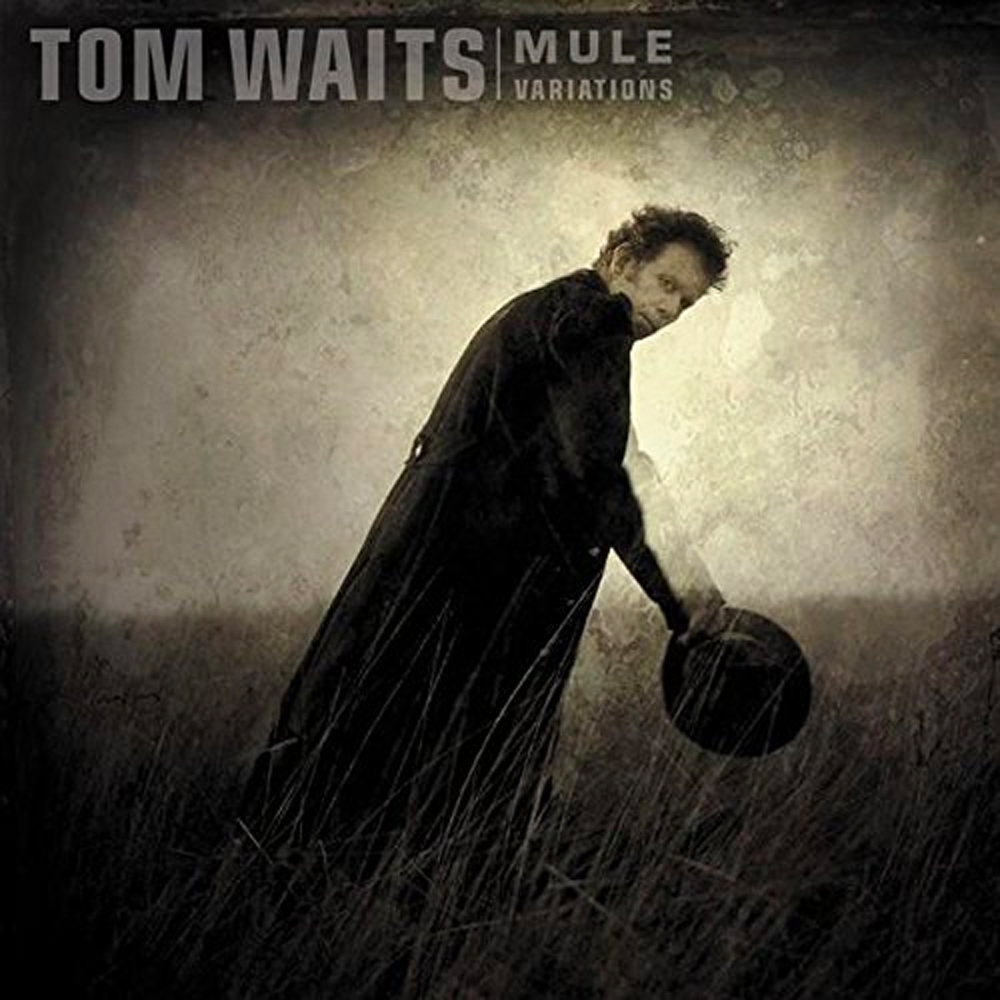 A lot of people would likely argue that “Mule Variations” deserves the top spot on this list. They’re wrong, but they can argue that. Still, “Mule Variations” is an ambitious work, with country and blues sounds featured prominently. This album reckons strongly with religion, with songs like “Georgia Lee” and “Come on Up to the House,” skewer American piety, while “Chocolate Jesus” pokes fun at the commercialization of faith. Ultimately, “Mule Variations” is a masterwork that serves to remind us that while Tom Waits might want to be a circus freak, he is not an unenlightened one.
A lot of people would likely argue that “Mule Variations” deserves the top spot on this list. They’re wrong, but they can argue that. Still, “Mule Variations” is an ambitious work, with country and blues sounds featured prominently. This album reckons strongly with religion, with songs like “Georgia Lee” and “Come on Up to the House,” skewer American piety, while “Chocolate Jesus” pokes fun at the commercialization of faith. Ultimately, “Mule Variations” is a masterwork that serves to remind us that while Tom Waits might want to be a circus freak, he is not an unenlightened one.
Play It Again: “Come on up to the House”
Skip It: “Filipino Box Spring Hog”
4. Franks Wild Years (1987)
 Subtitled “Un Operachi Romantico in Two Acts,” (we don’t know either), this is another one of Waits’ theater soundtracks. This time, it’s to a play that he wrote about his father, which was staged by the Steppenwolf Theater Company. This album is a treat all the way through, with a sort of freedom and looseness of a true artist. “Way Down in the Hole,” is the album’s breakout song, serving as inspiration for Nick Cave’s “Red Right Hand,” and as the theme to “The Wire,” but the entire album is absolutely stunning.
Subtitled “Un Operachi Romantico in Two Acts,” (we don’t know either), this is another one of Waits’ theater soundtracks. This time, it’s to a play that he wrote about his father, which was staged by the Steppenwolf Theater Company. This album is a treat all the way through, with a sort of freedom and looseness of a true artist. “Way Down in the Hole,” is the album’s breakout song, serving as inspiration for Nick Cave’s “Red Right Hand,” and as the theme to “The Wire,” but the entire album is absolutely stunning.
Play It Again: “Temptation”
Skip It: “I’ll Take New York”
3. Alice (2002)
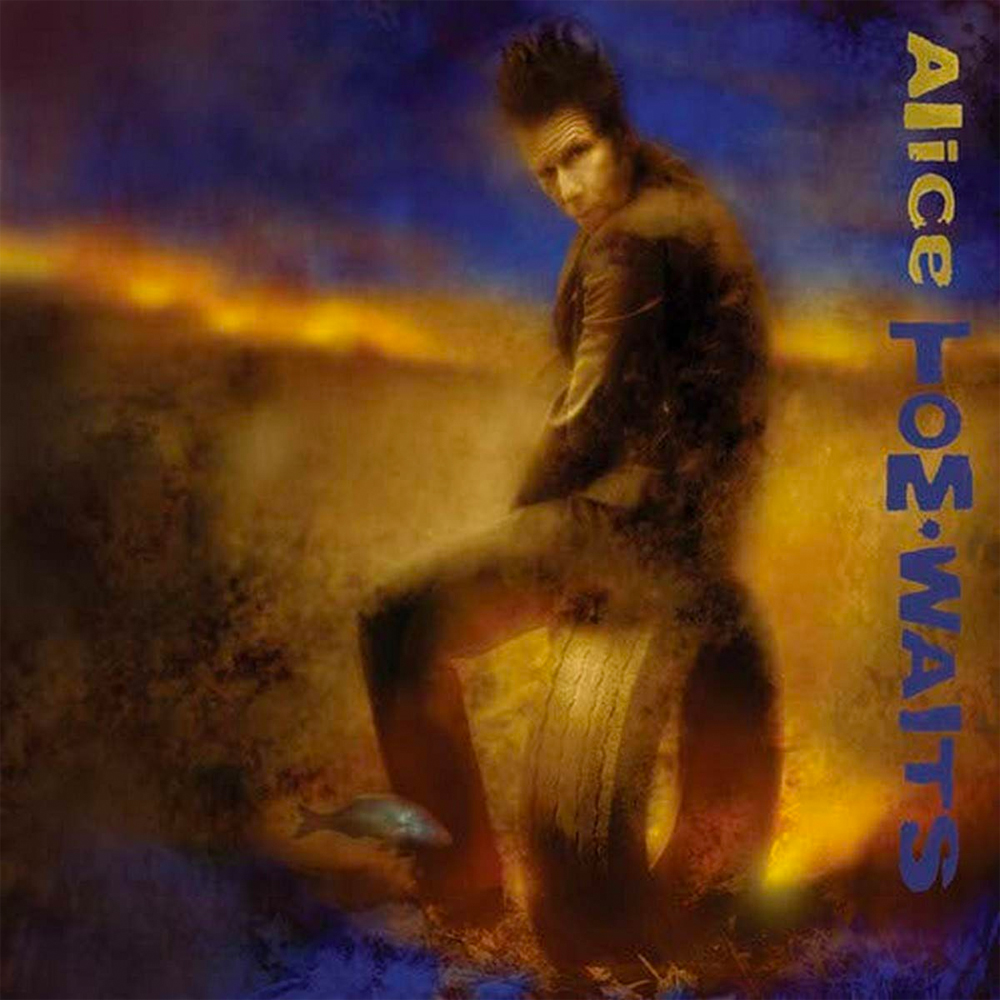 Waits’ second collaboration with theater director Robert Wilson, “Alice” is the soundtrack for a play of the same name, about “Alice in Wonderland” author Lewis Carroll’s obsession with young Alice Liddell and subsequent psychological breakdown. From its wintery, jazzy opener to the raucous fake German rollercoaster of “Kommienezuspadt,” to the dark cabaret sounds of “Reeperbahn,” “Alice” is Waits at his most diabolical and his most elegant. An absolutely rapturous experience, start to finish.
Waits’ second collaboration with theater director Robert Wilson, “Alice” is the soundtrack for a play of the same name, about “Alice in Wonderland” author Lewis Carroll’s obsession with young Alice Liddell and subsequent psychological breakdown. From its wintery, jazzy opener to the raucous fake German rollercoaster of “Kommienezuspadt,” to the dark cabaret sounds of “Reeperbahn,” “Alice” is Waits at his most diabolical and his most elegant. An absolutely rapturous experience, start to finish.
Play It Again: “Kommienezuspadt”
Skip It: “Fish and Bird”
2. Rain Dogs (1985)
 An absolute masterpiece in almost every conceivable way, “Rain Dogs” blends Waits’ avant-garde sensibilities with ‘80s rock almost perfectly. The album kicks off on a magnificently horrifying note with “Singapore,” which sounds like skeleton pirates out on the prowl, and includes songs like “Cemetery Polka,” which takes one through a greed-fueled wonderland of dying family members. Ultimately, though, songs like “Jockey Full of Bourbon,” “Time” and “Downtown Train,” will make the most lasting impressions. This is Waits at the height of his power, churning out an absolutely phenomenal experience, beaten only by one album.
An absolute masterpiece in almost every conceivable way, “Rain Dogs” blends Waits’ avant-garde sensibilities with ‘80s rock almost perfectly. The album kicks off on a magnificently horrifying note with “Singapore,” which sounds like skeleton pirates out on the prowl, and includes songs like “Cemetery Polka,” which takes one through a greed-fueled wonderland of dying family members. Ultimately, though, songs like “Jockey Full of Bourbon,” “Time” and “Downtown Train,” will make the most lasting impressions. This is Waits at the height of his power, churning out an absolutely phenomenal experience, beaten only by one album.
Play It Again: ‘Jockey Full of Bourbon”
Skip It: “Walking Spanish”
1. Bone Machine (1992)
 If you absotively, posolutely, need to have a gutting existential experience, “Bone Machine” gets the job done. From its opening abrasiveness on “Earth Died Screaming,” this album is Tom Waits undergoing a midlife crisis with stellar aplomb. There’s your usual fare, like “Dirt in the Ground,” which sounds like a funeral dirge, but there are also soaring songs like “Who Are You” and “Black Wings,” loud cries into the darkness like “I Don’t Wanna Grow Up” and minor tragedies like “Whistle Down the Wind” and “A Little Rain,” which begins surreally and culminates in the murder of a teenage girl. Ultimately, though, it is the album’s closer, “That Feel,” a cry into the darkness, a statement that no matter how horrific life becomes, we can never lose the feel of how wonderful it is to just be alive that makes the whole thing perfect.
If you absotively, posolutely, need to have a gutting existential experience, “Bone Machine” gets the job done. From its opening abrasiveness on “Earth Died Screaming,” this album is Tom Waits undergoing a midlife crisis with stellar aplomb. There’s your usual fare, like “Dirt in the Ground,” which sounds like a funeral dirge, but there are also soaring songs like “Who Are You” and “Black Wings,” loud cries into the darkness like “I Don’t Wanna Grow Up” and minor tragedies like “Whistle Down the Wind” and “A Little Rain,” which begins surreally and culminates in the murder of a teenage girl. Ultimately, though, it is the album’s closer, “That Feel,” a cry into the darkness, a statement that no matter how horrific life becomes, we can never lose the feel of how wonderful it is to just be alive that makes the whole thing perfect.
Play It Again: “Who Are You”
Skip It: “Let Me Get Up on It”
